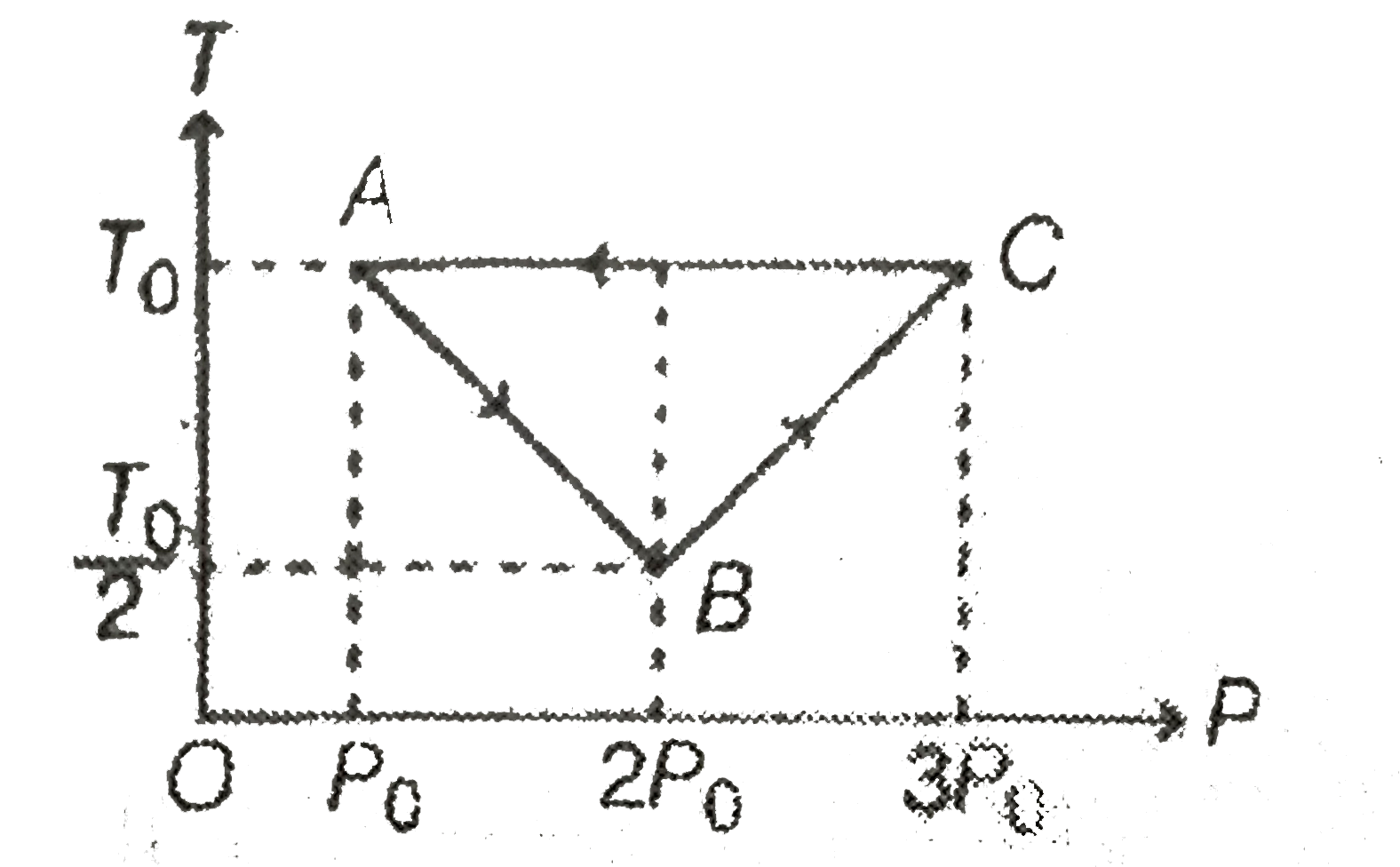In an adibatic process, no transfer of heat takes place between system and surroundings. Choose the correct option for free expansion of an ideal gas under adiabatic conditions from the following :
q=0,ΔT≠0,W=0
q≠0,ΔT=0,W=0
q=0,ΔT=0,W=0
q=0,ΔT<0,W≠0
The correct Answer is:C
To solve the problem regarding the free expansion of an ideal gas under adiabatic conditions, we can follow these steps:
1. Understanding the Adiabatic Process:
- In an adiabatic process, there is no heat exchange between the system and its surroundings. Therefore, we can state:
Q=0
2. Identifying Free Expansion:
- Free expansion refers to the expansion of a gas into a vacuum. In this case, the gas does not perform any work against external pressure. Hence, we can conclude:
W=0
3. Applying the First Law of Thermodynamics:
- The First Law of Thermodynamics states:
ΔU=Q+W
- Substituting the values we have:
ΔU=0+0=0
- This indicates that the change in internal energy (ΔU) is zero.
4. Relating Change in Internal Energy to Temperature:
- The change in internal energy for an ideal gas can also be expressed as:
ΔU=nCvΔT
- Where n is the number of moles, Cv is the molar heat capacity at constant volume, and ΔT is the change in temperature.
- Since we established that ΔU=0, we can set the equation to:
nCvΔT=0
5. Analyzing the Equation:
- The number of moles n and the heat capacity Cv are both positive quantities and cannot be zero. Therefore, for the equation to hold true, we must have:
ΔT=0
6. Conclusion:
- From our analysis, we have determined that:
- Q=0
- W=0
- ΔU=0
- ΔT=0
7. Choosing the Correct Option:
- Now, we can evaluate the options provided in the question. The correct option should reflect that:
- Q=0
- ΔT=0
- W=0
- Based on our findings, the correct option is:
- Option C: Q=0, ΔT=0, W=0
- In an adiabatic process, there is no heat exchange between the system and its surroundings. Therefore, we can state:
Q=0
- Free expansion refers to the expansion of a gas into a vacuum. In this case, the gas does not perform any work against external pressure. Hence, we can conclude:
W=0
- The First Law of Thermodynamics states:
ΔU=Q+W
- Substituting the values we have:
ΔU=0+0=0
- This indicates that the change in internal energy (ΔU) is zero.
- The change in internal energy for an ideal gas can also be expressed as:
ΔU=nCvΔT
- Where n is the number of moles, Cv is the molar heat capacity at constant volume, and ΔT is the change in temperature.
- Since we established that ΔU=0, we can set the equation to:
nCvΔT=0
- The number of moles n and the heat capacity Cv are both positive quantities and cannot be zero. Therefore, for the equation to hold true, we must have:
ΔT=0
- From our analysis, we have determined that:
- Q=0
- W=0
- ΔU=0
- ΔT=0
- Now, we can evaluate the options provided in the question. The correct option should reflect that:
- Q=0
- ΔT=0
- W=0
- Based on our findings, the correct option is:
- Option C: Q=0, ΔT=0, W=0
Topper's Solved these Questions
Similar Questions
Knowledge Check
In an adiabatic process, no transfer of heat takes place between system and surroundings. Choose the correct option for free expansion of an ideal gas under adiabatic condition from the following.
Aq=0,ΔT≠0,W=0Bq≠0,ΔT=0,W=0Cq=0,ΔT=0,W=0Dq=0,ΔT<0,W≠0Which of the following is correct option for free expansion of an ideal gas under adiabatic condition?
Aq≠0,ΔT=0,W=0Bq=0,ΔT=0,W=0Cq=0,ΔT<0,W≠0Dq=0,ΔT≠0,W=0
Assertion : During an adiabatic process, heat energy is not exchanged between system and its surroundings.
Reason : The temperature of a gas increases when it undergoes andn adiabatic expansion.
View SolutionWhich of the following relation is correct for the calculation of workdone in expansion of an ideal gas by a reversible and adiabatic process.
View SolutionThe correct figure representing isothermal and adiabatic expansions of an ideal gas from a particular initial state is :
View SolutionDefine an adiabatic process and state essential conditions for such a process to take place. Write its process equations in terms of , and . Show analytically that work done by one mole of an ideal gas during adiabatic expansion from temperature T1 to T2 is given by =R(T1−t2)1−λ.
View SolutionOne mole of an ideal monoatomic gas is taken through a cyclic process as shown. Choose the correct option(s).

View SolutionChoose the correct option from the four given below:
Which one of the following is a Greenhouse gas ?
View Solution
